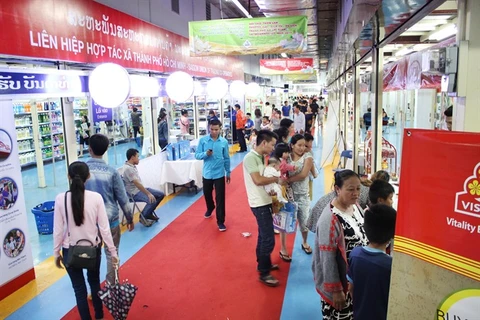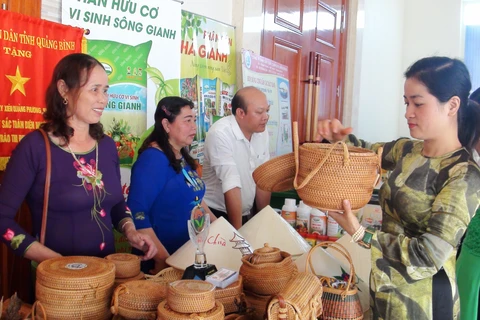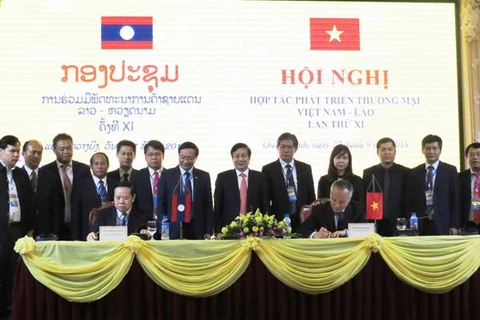Nghe An (VNA) – The central province of Nghe An has made various efforts to facilitate trade promotion activities and goods exchange with Laos, thereby boosting border trade between the two sides.
The province has heavily invested in upgrading border trade infrastructure with the focus on building, expanding and renovating roads crossing border gates with Laos and border markets.
Nghe An has six districts bordering Laos that are home to about 30 border markets, including three located near border gates – Thanh Thuy market (Thanh Chuong district), Thong Thu market (Que Phong district), and Nam Can market (Ky Son district).
The province has also created favourable conditions for local enterprises to expand investment and business partnership with their peers from Laos. It is estimated that there are about 90 firms from Nghe An doing business and investing in the neighbouring country, mostly in the fields of mining, hydropower, wood processing, winemaking, steel manufacturing, forestry, travel, agribusiness, education, information and telecommunications.
To further stimulate two-way trade, Deputy Director of the provincial Department of Industry and Trade Vo Thi An has suggested the two sides upgrade Thanh Thuy – Nam On border gate to an international gate and open two auxiliary border gates.
The province has also proposed the two countries’ governments to encourage exporters and importers of both sides making payments via banks in an attempt to reduce cash payment and support the development of commercial banks at border areas.
Nghe An, Vietnam’s largest province by area, has 419 km of border line shared with the Lao provinces of Houaphan, Kieng Khouang and Bolikhamsai. It has five border gates to Laos, including the international gate of Nam Can and the four auxiliary gates of Thanh Thuy, Tam Hop, Cao Veu and Thong Thu, which are seen as hubs for import and export activities in the country’s northwest.
In the first nine months of 2018, the trade turnover between Nghe An and Laos reached nearly 20 million USD, up 25 percent from the same period last year. –VNA
The province has heavily invested in upgrading border trade infrastructure with the focus on building, expanding and renovating roads crossing border gates with Laos and border markets.
Nghe An has six districts bordering Laos that are home to about 30 border markets, including three located near border gates – Thanh Thuy market (Thanh Chuong district), Thong Thu market (Que Phong district), and Nam Can market (Ky Son district).
The province has also created favourable conditions for local enterprises to expand investment and business partnership with their peers from Laos. It is estimated that there are about 90 firms from Nghe An doing business and investing in the neighbouring country, mostly in the fields of mining, hydropower, wood processing, winemaking, steel manufacturing, forestry, travel, agribusiness, education, information and telecommunications.
To further stimulate two-way trade, Deputy Director of the provincial Department of Industry and Trade Vo Thi An has suggested the two sides upgrade Thanh Thuy – Nam On border gate to an international gate and open two auxiliary border gates.
The province has also proposed the two countries’ governments to encourage exporters and importers of both sides making payments via banks in an attempt to reduce cash payment and support the development of commercial banks at border areas.
Nghe An, Vietnam’s largest province by area, has 419 km of border line shared with the Lao provinces of Houaphan, Kieng Khouang and Bolikhamsai. It has five border gates to Laos, including the international gate of Nam Can and the four auxiliary gates of Thanh Thuy, Tam Hop, Cao Veu and Thong Thu, which are seen as hubs for import and export activities in the country’s northwest.
In the first nine months of 2018, the trade turnover between Nghe An and Laos reached nearly 20 million USD, up 25 percent from the same period last year. –VNA
VNA






















